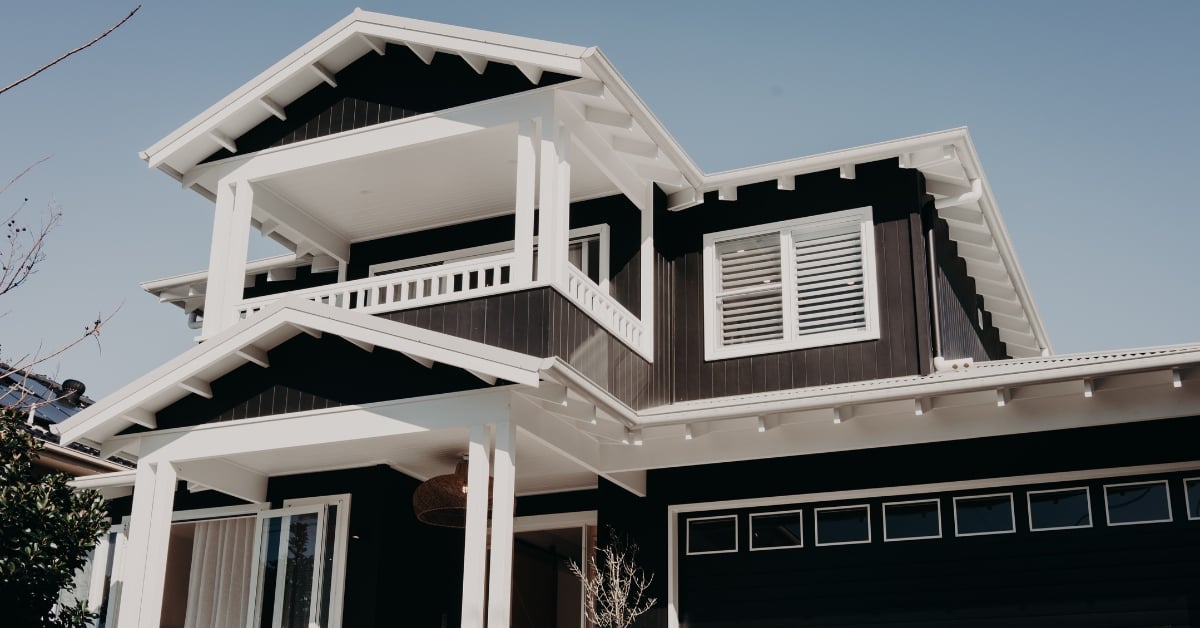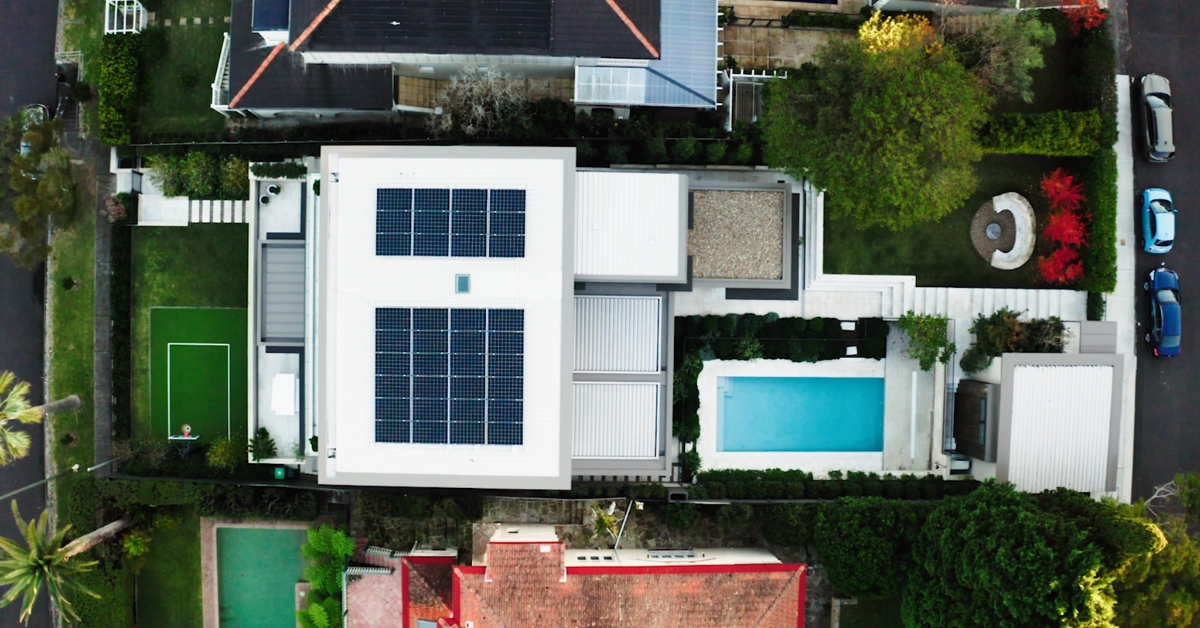A Guide to Weather Proofing Your Property for Tenants

If you own a rental property, it is essential to keep it in good condition at all times. That means doing some specific maintenance when unexpected weather changes occur to keep your investments in top shape.
Rental providers (landlords) must make sure their property meets minimum standards which includes structural soundness and being free from mould and dampness.
Here are a few things to consider to safeguard your property for renters and to keep it shielded from the elements all year round:
- Clean the gutters
- Treat mould
- Upgrade insulation and windows
- Prevent slipping
- Draft proofing
- Roof and gutter maintenance
- Sealing windows and doors
- Landscaping and drainage
- HVAC system maintenance
- Plumbing and pipe protection
- Exterior maintenance
Clean the gutters
There are many reasons why cleaning out your rental property's gutters is needed.
If there's a build-up of leaves, sticks or other debris, this can be a fire hazard. That is not to mention the potential to block up the structure itself, which can make it difficult for water to drain through. This can lead to more significant problems later on, such as gutters that sag, along with mildew accumulating in the area. It can also cause water damage, which could potentially affect the home itself.
If you wish to clean the gutters yourself, you will need a sturdy ladder. You can collect leaves and mulch in a bucket, working your way along. Alternatively, you can scoop out what has accumulated and throw it onto a tarpaulin sheet placed underneath the drain. Keep an eye out for hazards such as overhead powerlines.
If you rather seek the help of a professional to do the job, have a chat with your property manager about the options open to you. They will be happy to organise a professional gutter cleaner to visit your property.
Treat mould
If your property is poorly ventilated, you will end up having to deal with mould issues. That is why you will want to focus on strategies that will keep it from getting there in the first place. Make sure tenants know what to look for and how they can help.
During the cooler months, tenants do not open windows as much. Therefore, condensation can often become an issue. Educate and encourage them to open windows in areas that get steamy, starting with the bathroom or laundry.
If you can, also look at getting professional treatment. Give the property a mould-killing go-over if there is a build-up of the nasty stuff. Don't forget to give your tenants the appropriate notice.
Finally, consider purchasing an exhaust fan if some areas tend to become mouldy very quickly.
Upgrade insulation and windows
If you get the opportunity to insulate your rental property thoroughly, this could pay off in the long run. How you do this will depend on the kind of dwelling you've invested in, but have a chat with your property manager if you're not sure of the right approach.
While insulating can be costly, it might help you secure a better weekly rent from tenants who will save on electricity bills. Moreover, you will help prevent damp air from entering your property.
Replacing windows is a great place to start, as 40% of heat energy escapes through them. You will want to upgrade to double glazed ones. If your budget is limited, then make sure at least to minimise drafts by adding or replacing worn weather stripping around doors and windows.
Prevent slipping
In winter, moss, mildew and algae can build up in damp and shady areas. This can end up making driveways, paths, outdoor patios slippery and dangerous.
Whilst tenants are responsible for maintaining these areas, you should make sure they know what to do and the areas to look out for before winter approaches.
Regular cleaning is key. You can buy products to help prevent moss and mildew build-up, but keeping the areas free from leaves and debris is the way to manage any build-up that may occur. It only requires to sweep or brush up the surfaces occasionally.
Draft proofing
Draft proofing involves finding and fixing cold drafts in the house to make it more comfortable and energy-efficient. Too much draft in a house can quite quickly lead to increased condensation and cold, causing the renter to have to utilise their heating appliances more often. This not only wastes energy but can also lead to increased power bills, not to mention having a cold and drafty home - especially in winter - is highly uncomfortable and may even make your tenants sick. To draft-proof your rental, you can:
- Look for and seal any obvious gaps with weather stripping or window treatments
- Use heavy, lined curtains to help keep warmth in
- Check windows for cracks and repair if necessary
- Seal up any old wall vents or downlight holes
- Install door vents into internal doors
- Caulking gaps around skirting boards and window/door architraves
Roof and gutter maintenance
Weather events such as storms, hail, wind and flooding can result in a lot of damage to rental properties – and financial headaches for landlords. Seasonal conditions can escalate any existing or potential issues in poorly maintained roofs and gutters and may pose a danger to tenants. If you’re an investor or property manager, consider carrying out the following maintenance:
Roofing and eaves
Check for any cracked, broken or missing tiles and panels. Damaged rooves can cause leaking and water damage after periods of heavy rain, and this can quickly spread to other areas of the property. Similarly, rotting or water-damaged eaves can lead to mould issues on exterior and interior walls.
Gutters
Check for any cracked, rusted-out or loose gutters that need replacing. At the same time, ensure all gutters are free from leaves and debris and aren’t clogged to avoid any water-related damage to the property.
Sealing windows and doors
One of the most common places where homes typically invite in the elements are the doors and windows. To weatherproof these areas and provide a comfortable, climate-controlled and energy-efficient rental property, you should always check whether doors and windows need replacing or updating. It could be in yours and the renters best interests to upgrade to energy-efficient windows and doors that are designed to control inside temperatures which can significantly lower energy bills.
Other options include double-glazing or weatherstripping existing windows to improve the heat loss & gain of the house, reducing the need for artificial heating. To weatherproof existing doors that are otherwise structurally sound, look at lining the sides of the doorframe and the top jamb with weatherstripping, and install a door sweep to seal the door and further reduce drafts.
Landscaping and drainage
Proper grading and drainage around your rental will protect against waterlogging during rain storms, making sure all rainwater easily drains away from all sides of the property. You can inspect the property’s grounds and check to see that any paving running alongside the house drains water away from – and not towards – the walls. Similarly, pay attention to any trees and shrubs on the property and prune back or remove any branches or trees that could compromise the structure of the house or the safety of the renter. You should also ensure that any garden beds aren’t built up high against the exterior walls and to make sure any exterior structures such as patios, sheds, handrails, fences and decks are properly sound and protected from severe weather changes.
HVAC system maintenance
Landlords should ensure their rentals HVAC system is functioning correctly to keep their renters comfortable during the hot and the cold months. Minimum standards state that rental properties must have a fixed heater (not portable) in good working order in the main living area. From 29 March 2023, the heater must also meet energy efficiency standards. This means that if a renter enters into a rental agreement from 29 March 2023, there must be a fixed energy efficient heater in the main living area. If there is an existing fixed heater that is not energy efficient, the rental provider must upgrade it. Once installed, landlords must organise regular HVAC maintenance including filter replacement and duct cleaning to ensure the system is safe and working effectively.
Plumbing and pipe protection
During cold winter months, frozen pipes can burst. Winterize plumbing systems by insulating exposed pipes in your rental’s garage, crawl spaces, and attic. You can wrap pipes in unheated areas with heat tape, thermostatically controlled heat cables, rags, newspapers, foam or even bubble wrap. While you’re at it, seal any leaks that allow cold air inside near where the pipes are located (i.e. around your dryer vents and electrical wiring).
Exterior maintenance
Exterior maintenance on your rental property allows you to prevent the progression of any existing problems. For example, if you regularly inspect and repair the property’s siding you may notice the existence of mould or wood rot. If left unchecked, these various issues with your siding, roofing and gutters can lead to high repair bills and potentially serious damage. Additionally, painting and sealing exterior surfaces with a high-quality waterproofing will further protect your rental’s structure from weather-related damage.
Need help maximising your rental return?
LJ Hooker property managers can help you maximise your returns. We offer a mix of investment and property management to address every possible circumstance on your behalf. Get a free appraisal today.
DISCLAIMER - The information provided is for guidance and informational purposes only and does not replace independent business, legal and financial advice which we strongly recommend. Whilst the information is considered true and correct at the date of publication, changes in circumstances after the time of publication may impact the accuracy of the information provided. LJ Hooker will not accept responsibility or liability for any reliance on the blog information, including but not limited to, the accuracy, currency or completeness of any information or links.
Share


